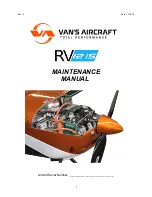
paint (as used for car manifolds/exhausts)
Exhaust Cooling
Whatever type of exhaust system you chose to fit, make
sure that the assembled headers and canisters, or pipe,
can be inserted from the front, through the motor-dome -
and make the hole(s) at least 18mm (3/4”) bigger than the
exhaust all around to ensure enough air enters the fuselage
to cool the exhaust system.
Of course, this warm air must also exit the fuselage - so you
also need to cut sufficient air exits in the bottom of the fuse-
lage. As a general rule the total area of the air exits must be
at least double the inlet area. For example if the hole in the
motor dome for the tuned pipe is 75mm (3”) diameter (area = 4400mm
2
), then the total air exit
area should be about 8800mm
2
. This is equal to 2 slots of 50mm (2”) wide x 90mm (4”) long.
The balsa fin post also has cnc milled cut-outs in it, to help prevent a build-up of hot air inside
the fuselage. From our experience we have found that 2 slots, each of about 125mm x 45mm
wide provide excellent cooling for both the 3W and DA-100 set-ups shown here.
Cut the air exit slots in the bottom of the fuselage with a sharp knife, and sand the edges to
shape with 240 grit sandpaper - remembering to radius all the corners to help prevent tearing of
the composite sandwich skin. It is advisable to reinforce the edges of the cutouts with either a
few carbon rovings, or narrow strips of 3mm plywood. (see photo above)
It is also helpful to make small tabs at the front of the cooling slots to make sure that the warm
air is sucked out of the fuselage. These can easily be made by making 2 cuts in the skin, about
20mm long, bending the skin outwards about 30 degrees, and creasing the inner surface with
the back (blunt) edge of the knife blade. Hold in position, and apply a couple of drops of thin CA
to the sandwich from inside the fuselage to maintain the angle. (See photo P21)
Fuel Tank Base
The Fuel tank base is an integral part of the balsa/composite sheet assembly that also supports
the rudder servos. It is sized to fit a Dubro 960 cc tank (part #690) perfectly, but can be adjust-
ed to suit your tank. Depending on the size of your fuel tank, glue a scrap balsa block at the front
of the tank base to stop the tank moving forwards. Secure the fuel tank to the tank base with 3
cable-ties as shown, through the milled slots.
Note:
If you wish to fit the fuel tank base slightly off the centre of the fuselage - to give clearance
for tuned pipe of large single canister, for example - you can lengthen the slot in the vertical
balsa/composite bulkhead by up to 15mm to permit this. This slot is shown arrowed in photo P8.
Ensure that the semi-circular cutouts under the tank base are securely glued down to the fibre-
glass sleeve over the wing tube, with careful preparation, and using at least 30 minute epoxy and
micro-balloons mixture.
Don't forget to add the short lengths of 1” fibreglass tape (with laminating epoxy) to reinforce the
joint between the vertical balsa bulkhead behind the tank and the fuselage floor - and also
between the rudder servo plate and the fuselage sides. See photos P10, P23 and P24.
Composite-ARF Extra 300SX
(2.6m span)
29
Radius the corners of all air exits,
and cut angled tabs at the front to
create some turbulence here and
make sure the air is sucked out.














































